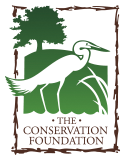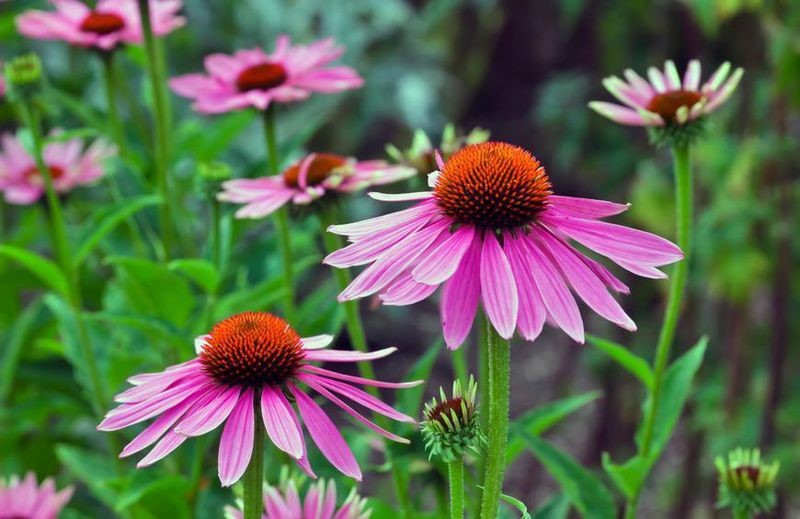Medical research from around the world has documented the health benefits of getting out in nature. Over the years, The Conservation Foundation (TCF) has promoted using parks, forest preserves, and open spaces as an important component of everyday health. But there is another health aspect of conservation that most people overlook – the preservation of plants with a scientific basis for their medicinal value. Here is a doctor that can always see you!
Plants with Medical Uses
Since antiquity, humans have tried a myriad of plants in their attempt to survive. Some nourished them, some clothed them, some killed them, and some cured their ills or provided a sense of well-being.
Plants have been used for medicinal purposes long before the prehistoric period. Ancient Unani manuscripts, Egyptian papyrus, and Chinese writings described the use of herbs. Evidence exists that Unani Hakims, Indian Vaids, and European and Mediterranean cultures were using herbs for over 4,000 years as medicine. Indigenous cultures in areas such as Rome, Egypt, Iran, Africa, and America used herbs in their healing rituals, while others developed traditional medical systems such as Homeopathy, Ayurveda, and Chinese Medicine in which herbal therapies were used systematically. Population growth, an inadequate supply of drugs, prohibitive cost of treatments, side effects of several synthetic drugs, and development of resistance to currently used drugs have led to increased emphasis on the use of plant materials as a source of medicines for a wide variety of human ailments.
Recently, WHO (World Health Organization) estimated that 80 percent of people worldwide rely on herbal medicines for some aspect of their primary health care needs. According to WHO, around 21,000 plant species have the potential for being used as medicinal plants.
Medicinal plants are considered as a rich resource of ingredients which can be used in drug development. Moreover, some plants are considered an important source of nutrition and because of that they are recommended for their therapeutic values. Some of these plants include ginger, green tea, walnuts, aloe, pepper, and turmeric. Some plants and their derivatives are considered an important source for active ingredients that are used in aspirin and toothpaste. Apart from the medicinal uses, herbs are also used in natural dye, pest control, food, perfume, tea and so on.
Plants with Medical Uses Found in Illinois
Many people are aware of the medicinal plants of the Amazon rainforest and other tropical climates, and how preservation of those lands can potentially contribute to the advance of medical science by protecting plants with possible medical benefits.
But plants found in Illinois also have medical/herbal uses and some can be edible, as well. Here is a partial list with a brief description of some of their uses. Many thanks to Karen Bergeron and her presentation Wild Medicinal and Edible Plants of Illinois.
- Burdock – good for tea and for many types of skin care
- Catnip – herbal remedy for treating disorders of the digestive system
- Cattail – edible (taste resembles cucumber) and its pollen is hemostatic and astringent
- Chicory – edible (used as coffee replacement) and can be used for poultice
- Chickweed – edible raw in salads or cooked as a green in soups; its juice is a remedy for itching
- Cinquefoil – astringent herb
- Dandelion – edible, rich source of Vitamin A
- Elderberry – wine and pies; main ingredient in Sambucol
- Elder Flower – tea and fritters; popular ingredient in skin care products
- Evening Primrose – tea; the oil from the seeds of Evening Primrose is sold in soft gels as a supplement, used as an anti-inflammatory, for weight loss, and for treatment of PMS and Multiple Sclerosis
- Ground Ivy – numerous medical uses including sciatica, hip gout, arthritic hands and knees
- Hedge Apple – very high in antioxidants and sold as premium skin and hair care oil
- Kudzu – According to WebMD, early research has shown that Pueraria might be helpful with many conditions such as diabetes, kidney and heart failure, strokes, menopause, and more
- Lemon Balm – Preparations from the leaves are used to treat colds and headaches, to relieve menstrual cramps, and to calm a nervous stomach
- Magnolia – Magnolia Bark is the main ingredient in the anti-cortisol weight loss supplements Relora and Relacore
- Milk Thistle – The active ingredient in milk thistle, silymarin, acts as an antioxidant by reducing free radical production; it is most used for liver disorders
- Milkweed – latex of plant used as remedy for skin problems, anodyne properties for its root and rhizome
- Mugwort – very aromatic for herb pillows and sachets
- Passionflower – extract and tea used as a mild sedative and sleep aid
- Quack Grass – tea; has curative properties as a demulcent
- Wild Strawberry – tea; fruits, leaves, and rhizomes have astringent and diuretic properties
DISCLAIMER:
This article is for educational and entertainment purposes. The FDA has not approved this information. Do not use this information to prevent, treat, diagnose, or otherwise affect any condition of the body. Do not identify plants solely from this information. Plants can be toxic if misused or misidentified. Unusual allergic reactions may occur.
Neither the author nor any member of TCF is a medical professional and assumes no responsibility for what you put in or on your body.
How TCF Helps Preserve Medicinal and Edible Plants
In its 50 years, TCF has preserved 35,000 acres in Northeastern Illinois. Along with mitigation of climate change and providing the benefits of being outdoors, conservation can also contribute to human health via the preservation of plants with herbal, medical, and edible uses. A recent inventory of plants on those lands includes many medicinal and edible plants. Many of them are not native and some considered invasive, but for edibles they are cherished by many. And their medical and herbal uses help people deal with many ailments. And who knows what benefits may be discovered in the future! Thanks to TCF’s efforts, in many ways, the doctor is outside and can always see you!
Ready to contribute to conservation efforts that help provide health benefits? Well, conservation is what The Conservation Foundation does every day. We can all do more together than we can alone. Join our collective momentum – become a member today!
Feel free to comment on this blog with additional ideas you have on how conservation contributes to human health.
By Steve Stawarz, Oak Brook
DuPage County Advisory Council Member



